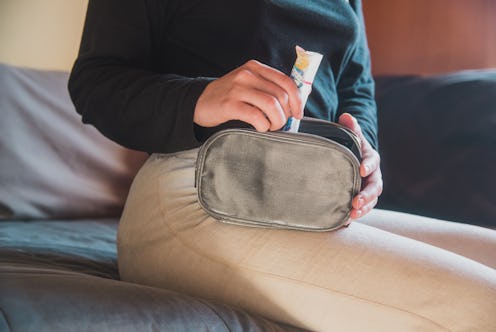Wellness
Are Tampons Safe To Use? Here's What Research Says About Toxic Metals & Chemicals
People who use tampons will go through an estimated 9,000 to 11,000 of them throughout their lifetime. This is already an impressive number, but if you recently stumbled across a viral video about tampons containing harmful chemicals like arsenic and lead, it may also make you stop and question the safety of tampons.
With the rise in concern about toxic metals in tampons, many are rethinking their menstrual care products. But before tossing every box in your cabinet, it’s important to separate fact from fear.
Recently, the American College of Medical Toxicology (ACMT) released a professional statement making it clear: there is no evidence that tampons cause metal poisoning. To help break down the facts, I spoke to Dr. Mehruba Anwar Parris, M.D., an emergency physician, medical toxicologist, and co-author of the ACMT statement, to answer the big question: Are tampons safe to use? The short answer is yes, but read on for the full science-backed truth.
1. What’s the truth about heavy metals and toxic chemicals in tampons?
This has become a big question over the past year after a 2024 study by Shearston et al. found trace levels of metalloids in tampons, including arsenic and lead. While headlines may have caused panic, Dr. Parris says it’s all about context.
“I don't believe the findings [of the study] were misrepresented, but unfortunately the message of the paper ended up creating fear,” she explains. “Just because a metal exists in a tampon does not mean the exposure is a significant source, causes any health effects, or is toxic to the body. Studies like these are scary to the public when context is not provided and are blown out of proportion by the media at large, as we saw after the publication of this study.”
The study measured levels far below the limits set by health authorities. So while trace amounts of metals exist due to agricultural processes, they’re not considered dangerous.
2. Are there chemicals in tampons?
Yes, but that doesn’t automatically mean they’re harmful. There are trace elements in many consumer products — not just tampons — due to the way they’re produced.
According to Dr. Parris, the amount of each metal found in the tampons within the Shearston et al. study was very small and well below accepted reference values for exposure. For context, in the ACMT Statement Position, ‘No Evidence That Tampons Cause Metal Poisoning,’ Dr. Parris and her constituents found that a 9-gram tampon would contain about 1.557 micrograms of lead, which is well below the threshold for harm.
“Even in the extremely unlikely event that the lead was completely absorbed intra-vaginally, it would be just a small fraction of the dietary lead required to approach an amount corresponding to the CDC reference value of 8.8 micrograms per day [considered safe for women of child-bearing age].”
3. What are tampons made of — and are the materials safe?
Most tampons are made of cotton, rayon, or a blend of the two. Dr. Parris assures consumers that these materials are widely tested and safe for their intended use.
4. Why did you co-author the ACMT position statement on tampon safety?
Dr. Parris says she felt compelled to respond after seeing the misinformation spread online, and wanted to provide context from the viewpoint of medical toxicologists who specialize in treating poisonings.
“As experts in toxicology and pharmacology, my co-authors and I have diagnosed and treated patients with real adverse health effects from metal exposure. I felt strongly that a basic scientific study that cannot be extended to prove health effects, such as this, should not upend a woman's quality of life or the advances made to health literacy, access to school, and economic opportunities for women, especially in developing areas worldwide.”
5. So, are tampons safe to use?
In short? Yes. Dr. Parris confirms she’s seen no credible evidence to suggest otherwise.
In fact, tampons are considered medical devices by the FDA, meaning they must go through safety reviews and meet certain requirements to be sold in the U.S.
6. What should people know about tampon safety?
Here are the essentials:
- Always wash your hands before and after inserting a tampon.
- Change your tampon every 4 to 8 hours.
- They’re regulated by the U.S. Food & Drug Administration and are considered class 2 medical devices.
- Choose the lowest absorbency tampon for your flow.
7. What should you look for when buying tampons?
Consumers should buy tampons from established retailers and reputable brands, Dr. Parris says. Reputable brands, like Tampax, will mention FDA compliance, third party credentialing, and disclose ingredients via SmartLabel, the product packaging, or the product website. Whether you choose traditional or organic tampons, make sure the packaging clearly lists ingredients and usage instructions.
Final Verdict: Are Tampons Safe?
Yes. Dr. Parris has yet to see any evidence that tampons are not safe to use, and current research and regulatory standards support their safety when used as directed. While some studies have detected trace metals in tampons, the levels are far below the allowable limits and don’t contribute to any health concern.
Expert: Dr. Mehruba Anwar Parris, M.D., FAMCT
